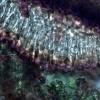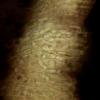
27-11-2025 15:41
Thomas LæssøeSpores brownish, typically 4-celled; 26.8 x 2.4;

27-11-2025 12:01
Thomas Læssøehttps://svampe.databasen.org/observations/10496727

27-11-2025 11:46
Thomas Læssøehttps://svampe.databasen.org/observations/10493918

27-11-2025 11:31
Thomas LæssøeCollectors notes: Immersed ascomata, erumpent thro

23-09-2025 13:31
Thomas Læssøehttps://svampe.databasen.org/observations/10534623

25-11-2025 14:24
Thomas Læssøehttps://svampe.databasen.org/observations/10490522

26-11-2025 18:13
The entire run of Mycotaxon is now available throu

25-11-2025 11:03
Mick PeerdemanHi all,One of my earliest microscopy attempts, so
Sarea difformis description
Garrido-Benavent Isaac,
27-02-2014 09:31
Has anybody a picture or description of the excipulum of Sarea difformis for comparison?
Thanks in advance!
Regards,
Isaac
Garrido-Benavent Isaac,
27-02-2014 19:21
Re : Sarea difformis description
Thanks Zotto,
Hyphae from my specimens seem more stout (reaching 4 um in diameter) and they are apparently a bit more agglutinated. Hawskworth and Sherwood (1981) didn't mention the anastomosis, but it seems a constant character in my samples and yours. It would be interesting trying to get some molecular data to compare it!!
Cheers,
Isaac
Hyphae from my specimens seem more stout (reaching 4 um in diameter) and they are apparently a bit more agglutinated. Hawskworth and Sherwood (1981) didn't mention the anastomosis, but it seems a constant character in my samples and yours. It would be interesting trying to get some molecular data to compare it!!
Cheers,
Isaac
Hans-Otto Baral,
28-02-2014 18:14
Garrido-Benavent Isaac,
03-03-2014 14:13
Re : Sarea difformis description
Yes, that photo seems more similar to what I often find in this Sarea species.
Thanks for your opinion, Zotto.
Cheers,
Isaac
Thanks for your opinion, Zotto.
Cheers,
Isaac



